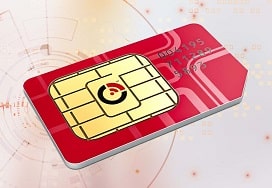Can You Use Esim In South Africa SIM, iSIM, eSIM Differences Explained
The rise of the Internet of Things (IoT) has considerably remodeled numerous sectors, significantly the economic landscape. This transformation brings with it a host of connectivity challenges that may hinder the full realization of IoT's potential in industrial functions. These challenges range from network reliability to information security considerations, and they require a nuanced understanding and innovative options.

One prominent challenge is the sheer scale of devices deployed in industrial environments. Many factories and production services are outfitted with a mess of sensors, machines, and IoT units. Managing connectivity amidst this vast community becomes a logistical nightmare, as various knowledge transmission standards and protocols can create compatibility issues. Ensuring that all devices talk seamlessly is important for effective monitoring and control.
Interference is another crucial issue affecting IoT connectivity in industrial functions. Factories usually include quite a few electronic devices, every emitting radio frequencies. These frequencies can overlap, leading to sign degradation and information loss. This interference can manifest in decreased device responsiveness, hampering operational efficiency. Mitigating this interference is important for sustaining sturdy connectivity across the community.
Euicc And Esim Consumer vs M2M eSIM Differences
Bandwidth limitations pose important hurdles as nicely - Physical Sim Vs Esim Which Is Better. Many industrial IoT purposes require real-time information transmission, which calls for substantial bandwidth. When the available bandwidth is inadequate, delays can happen, lowering the effectiveness of monitoring methods. To address this, industries should evaluate their existing community infrastructure and contemplate upgrading to greater bandwidth choices or using edge computing solutions.

Data security is a paramount concern as industrial IoT networks turn out to be extra advanced. The proliferation of linked gadgets will increase the potential assault floor for cyber threats. Unauthorized entry to equipment or delicate information can outcome in operational disruption, monetary loss, or security hazards. Implementing strong encryption protocols and entry controls is important to safeguarding the integrity of related systems.
Moreover, making certain the reliability of connections in geographically dispersed industrial sites is challenging. Many industrial applications function in remote areas with limited access to traditional community infrastructures. Cellular connections could not present the necessary reliability, while satellite tv for pc communications can suffer from latency. Exploring blended connectivity options or dedicated networks can present extra stability and redundancy.
Can You Use Esim In South Africa Key eUICC Information about eSIM
Device management itself presents additional challenges. As industrial IoT platforms scale, managing devices throughout their lifecycle, from deployment to decommissioning, becomes complicated. Implementing a centralized gadget management protocol might help streamline this course of, enabling simpler updates, diagnostics, and monitoring of related methods.
The integration of legacy techniques with new technologies usually complicates IoT adoption. Many industries still depend on older equipment and protocols, which may be incompatible with modern IoT solutions. Bridging this hole requires a considerate method, generally involving the retrofitting of existing equipment or creating custom interfaces that allow legacy methods to communicate with new devices.
Euicc Vs Esim Unlocking eSIM Potential for Industrial Applications
Latency points additionally require cautious consideration in industrial environments. Many IoT purposes contain crucial processes the place even minor delays can have important repercussions. For instance, in automated manufacturing, well timed knowledge feeds enable for fast decision-making and adjustments. Ensuring minimal latency by way of optimized protocols and edge processing can improve operational protocol.
Power reliability is an often-overlooked factor that may affect IoT connectivity. Many units in industrial purposes are deployed in hard-to-reach areas, making power supply inconsistent. The improvement of energy harvesting technologies or employing long-lasting battery options can help mitigate visit site these challenges, making certain units stay operational in challenging environments.
User training and training are important parts for overcoming connectivity challenges. Personnel should be well-versed within the operational features of IoT technologies to maximize their potential. This training helps facilitate smoother integration, better maintenance, and optimized utilization, resulting in improved efficiency and productivity in industrial functions.
Physical Sim Vs Esim Which Is Better Multi-IMSI vs eUICC Comparison
In conclusion, while IoT technologies present exciting opportunities for enhancing industrial applications, they also introduce numerous connectivity challenges. By addressing points corresponding to community reliability, data safety, bandwidth limitations, and integration with legacy methods, industries can optimize their IoT implementations. Embracing revolutionary options and emphasizing consumer coaching can help bridge the hole between present capabilities and future possibilities, in the end resulting in more resilient and efficient industrial operations.
- Limited bandwidth in remote areas can hinder real-time information transmission and evaluation in industrial IoT functions.
- The integration of legacy methods with modern IoT devices often results in compatibility issues, complicating the implementation course of.
- Security vulnerabilities arise from quite a few linked gadgets, rising the risk of cyberattacks in industrial environments.
- Interference from different wireless alerts can disrupt IoT communications, resulting in unreliable data circulate and operational inefficiencies.
- Energy limitations in edge units can restrict their functionality and longevity, necessitating frequent maintenance or substitute.
- Variability in device standards and protocols can complicate device interoperability, decreasing the effectiveness of IoT methods.
- Scalability can turn out to be a problem because the variety of linked units will increase, overwhelming current network infrastructures.
- Inconsistent knowledge high quality from various sensors may result in erroneous decision-making and degraded operational efficiency.
- Geographic isolation of amenities can limit entry to cloud sources, prompting the necessity for localized information processing options.
- Environmental components, corresponding to excessive temperatures or humidity, can adversely affect sensor efficiency and connectivity.undefinedWhat are the widespread IoT connectivity challenges in industrial applications?
Common challenges embrace community reliability, knowledge safety, interoperability between units, bandwidth limitations, and latency issues. Addressing these requires sturdy infrastructure, effective communication protocols, and layered security measures.
Which Networks Support Esim South Africa eUICC: Unlocking Deployment Potential
How can community reliability impression IoT methods in industries?

Network reliability is essential as interruptions can lead to information loss, operational downtime, and elevated prices. Ensuring consistent connectivity could be achieved by way of redundant methods, common maintenance, and utilizing dependable communication technologies.
Vodacom Esim Problems Difference Between eSIM and eUICC
What measures can be taken to boost information security in IoT applications?
Implementing sturdy encryption protocols, access controls, and steady monitoring can enhance security. Regular software updates and worker training on cybersecurity greatest practices are additionally vital in mitigating dangers.
How do bandwidth limitations have an effect on industrial IoT deployments?
Bandwidth limitations can restrict information transmission speeds, impacting real-time decision-making and analytics. Solutions embody optimizing data move, using edge computing to course of knowledge domestically, and selecting applicable IoT communication technologies.
Esim Vs Normal Sim Importance of eUICC Technology
What role does interoperability play in IoT connectivity challenges?
Interoperability is essential because it allows diverse units and systems to work collectively. Lack of standardization can create silos. Using universal protocols and APIs may help organizations obtain better integration and performance throughout different IoT options.
How can companies overcome latency points in IoT applications?
- Use Esim Or Physical Sim
Reducing latency could be next approached by optimizing community infrastructure, using edge computing to course of data nearer to the source, and choosing quicker communication protocols. These strategies enhance the responsiveness of IoT applications.
Esim Vs Normal Sim Device Services Identity Scheme
What is the significance of choosing the proper communication protocol for IoT?
Choosing the right communication protocol influences knowledge transmission reliability and effectivity. It’s important to assess the precise use case necessities, corresponding to range, power consumption, and knowledge quantity, to make sure optimum efficiency.
How can organizations guarantee correct scaling of their IoT systems?
Dual Sim Vs Esim Importance of eUICC Explained
Proper scaling entails choosing flexible technologies, maintaining a modular structure, and repeatedly monitoring system performance to adapt the infrastructure as business needs grow. Regular assessments might help forecast future demands and stop bottlenecks.
What ought to companies consider when implementing IoT connectivity in a legacy environment?

When integrating IoT with legacy systems, organizations ought to evaluate compatibility, assess potential upgrades to existing infrastructure, and guarantee data integration strategies are robust. Planning for gradual implementation can also decrease disruptions.